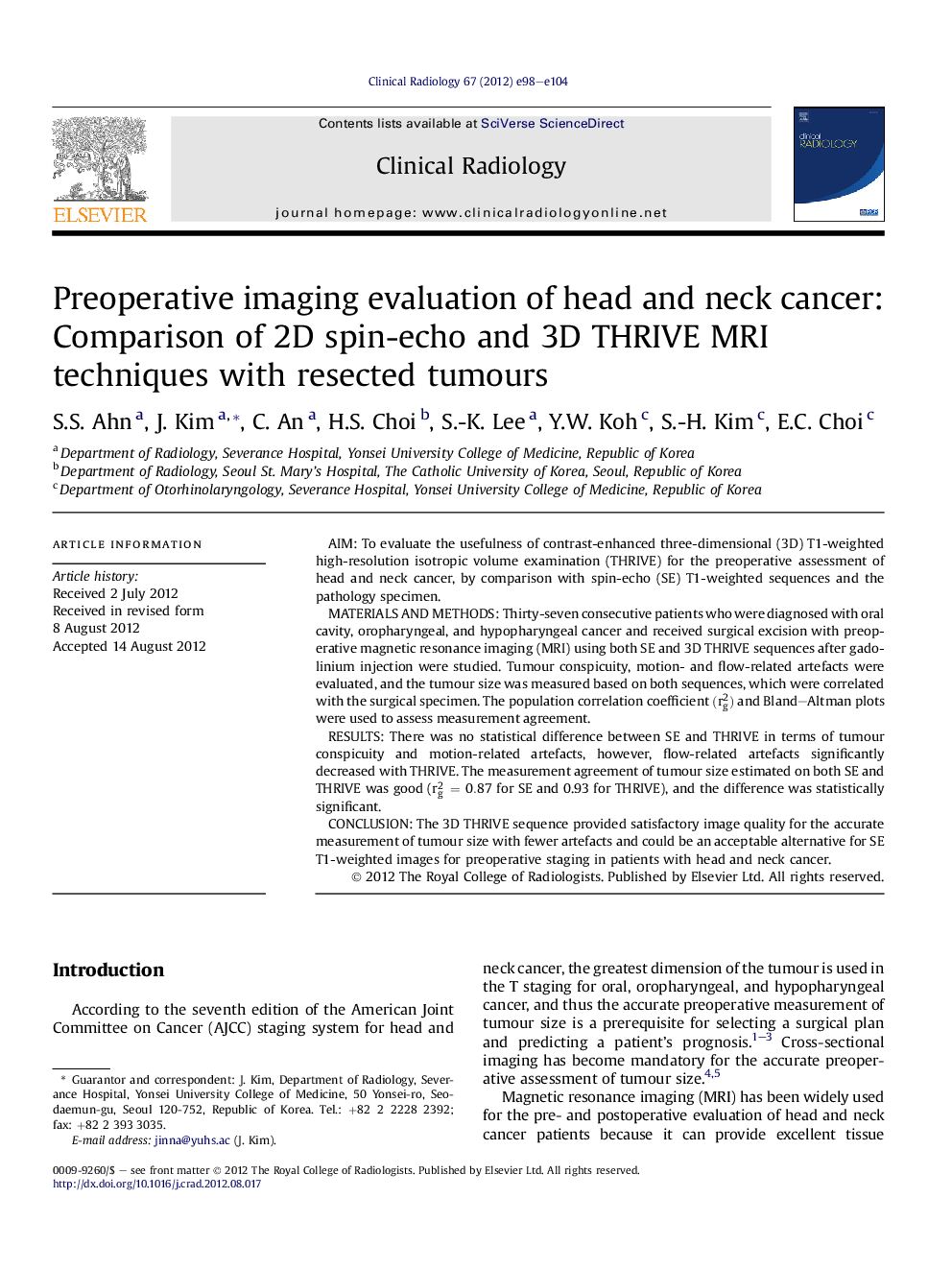| Article ID | Journal | Published Year | Pages | File Type |
|---|---|---|---|---|
| 3982880 | Clinical Radiology | 2012 | 7 Pages |
AimTo evaluate the usefulness of contrast-enhanced three-dimensional (3D) T1-weighted high-resolution isotropic volume examination (THRIVE) for the preoperative assessment of head and neck cancer, by comparison with spin-echo (SE) T1-weighted sequences and the pathology specimen.Materials and methodsThirty-seven consecutive patients who were diagnosed with oral cavity, oropharyngeal, and hypopharyngeal cancer and received surgical excision with preoperative magnetic resonance imaging (MRI) using both SE and 3D THRIVE sequences after gadolinium injection were studied. Tumour conspicuity, motion- and flow-related artefacts were evaluated, and the tumour size was measured based on both sequences, which were correlated with the surgical specimen. The population correlation coefficient (rg2) and Bland–Altman plots were used to assess measurement agreement.ResultsThere was no statistical difference between SE and THRIVE in terms of tumour conspicuity and motion-related artefacts, however, flow-related artefacts significantly decreased with THRIVE. The measurement agreement of tumour size estimated on both SE and THRIVE was good (rg2=0.87 for SE and 0.93 for THRIVE), and the difference was statistically significant.ConclusionThe 3D THRIVE sequence provided satisfactory image quality for the accurate measurement of tumour size with fewer artefacts and could be an acceptable alternative for SE T1-weighted images for preoperative staging in patients with head and neck cancer.
